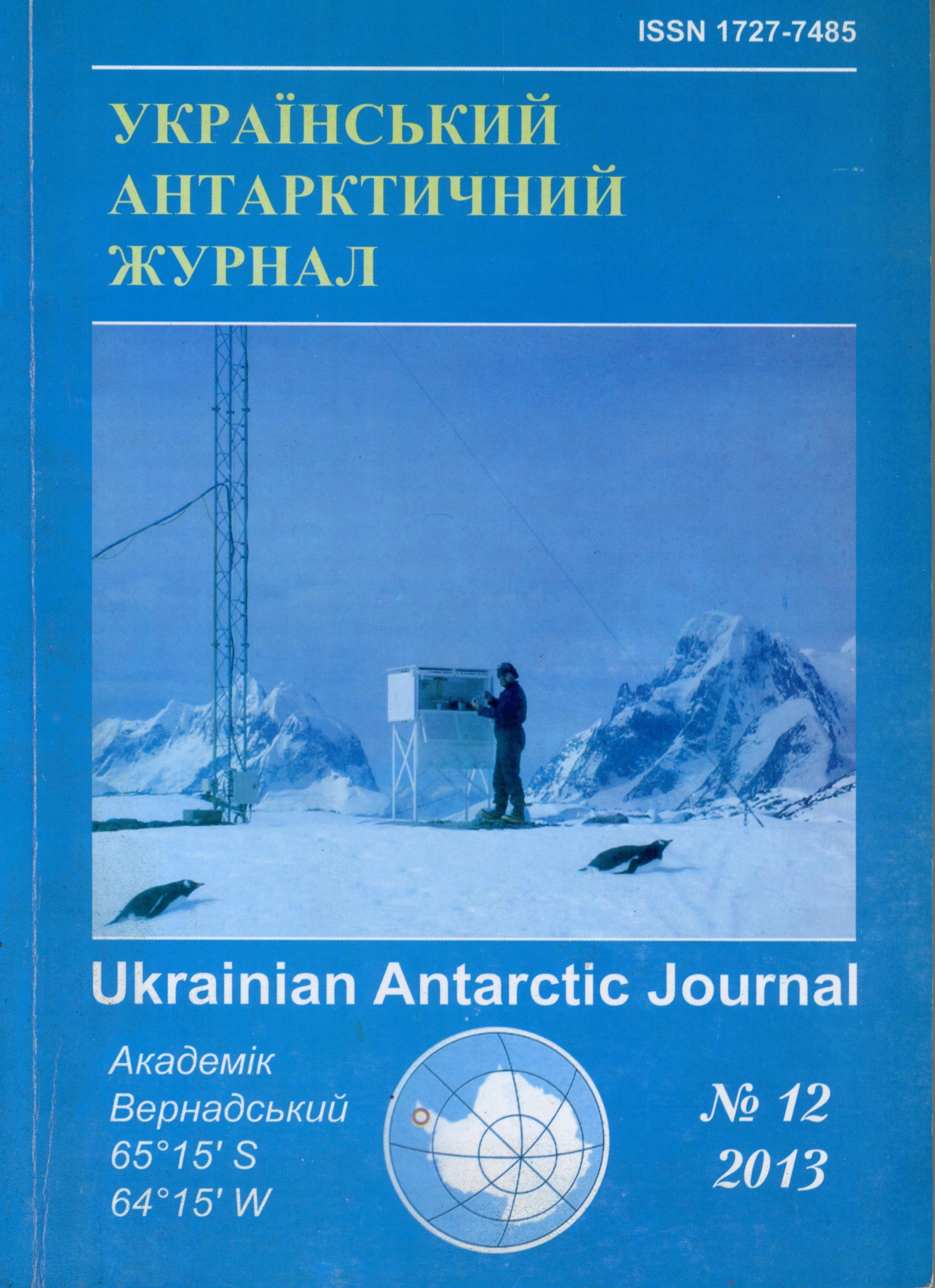No 12 (2013): Ukrainian Antarctic Journal
Articles
Phage detection in the rhizosphere of higher antarctic plants using transmission electron microscopy
Published
December 15, 2013
Keywords
- bacteriophages,
- soil viruses,
- phage ecology,
- transmission electron microscopy
How to Cite
Mas, O., Andriychyk, O., & Polischuk, V. (2013). Phage detection in the rhizosphere of higher antarctic plants using transmission electron microscopy. Ukrainian Antarctic Journal, (12), 199-205. https://doi.org/10.33275/1727-7485.12.2013.264
Abstract
This work is focused on electron microscopy of soil samples from root zone of higher Antarctica plants Deschampsia antarctica and Colobanthus quitensis for detection of bacteriophages. Here we compared several techniques and proposed optimal method for isolation of phage suspensions from the substrate. For the first time, the biodiversity of bacteriophages and virus-like particles (VLPs) in the root zone of Antarctic plants has been evaluated. According to morphological description, the dimensions and taxonomic position of several bacteriophages were elucidated. Possible reasons for degradation of virus particles observed during the microscopy studies have been suggested.
References
- Zhilenkov, E.L., Zhilenkov, M.E., Zaval`skij, L.Yu. et al. (2007). Fagi v pochvenny`x obrazczax Antarktidy` [Phages in the soil samples of Antarctica]. V Mizhnarodna konferentsiia «Bioresursy ta virusy». Kyiv, 2007. pp. 154.
- Martazinova, V.F., Timofeev, V.E., & Ivanova, E.K. (2011/2012). Pogodny`e usloviya na stancii Akademik Vernadskij v 2011 g. i ozhidaemoe sostoyanie temperaturnogo rezhima v letnij period 2011-2012 gg. po instrumental`ny`m nablyudeniyam 2011 g. [Weather conditions on the Akademik Vernadsky in 2011 and the expected state of the temperature regime based on the instrumental observations in 2011]. Ukrainian Antarctic Journal, 10-11, 320–332.
- Polishchuk, V.P., Kostikov, I.Iu., Taran, N.Iu. et al. (2009). Kompleksne vyvchennia antarktychnoi bioty [A comprehensive study of the Antarctic biota]. Ukrainian Antarctic Journal, 8, 284–292.
- Puhach, O.V., Mas, O.V., Andriichuk, O.M., & Polishchuk, V.P. (2011-2012). Biolohichni kharakterystyky bakteriofahiv, vydilenykh v Antarktydi [Biological characteristics of the bacteriophages isolated in Antarctica]. Ukrainian Antarctic Journal, 10-11, 296–301.
- Tixonenko, A.S. (1968). Ul`trastruktura virusov bakterij [Ultrastructure of bacterial viruses]. Moscow, Наука.
- Ackermann, H.W. (1998). Tailed bacteriophages: the order Caudovirales. Adv. Virus Res., 51, 135-201.
- Ackermann, H.W. (2001). Frequency of morphological phage descriptions in the year 2000. Arch. Virol., 146, 843–857.
- Ackermann, H.W. (2003). Bacteriophage observations and evolution. Res. Microbiol., 154, 245-251.
- Bacteriophage ecology. Abedon S.T. (Ed.). Cambridge University Press, Cambridge, UK. pp. 37–65.
- Barrientos-Díaz, L., Gidekel, M., & Gutiérrez-Moraga, A. (2008). Characterization of rhizospheric bacteria isolated from Deschampsia antarctica Desv. World Journal of Microbiology and Biotechnology, 24(10), 2289–2296.
- Kimura, M., Zhong-Jun, Jia, Nakayama, N. еt аl. (2008). Ecology of viruses in soils: Past, present and future perspectives. Soil Science and Plant Nutrition, 54(1), 1–32.
- Tashyrev, O.B. (2009). Complex researches of structure and function of Antarctic terrestrial microbial communities. Ukrainian Antarctic Journal, 8, 228–242.

